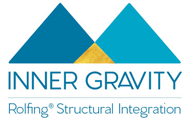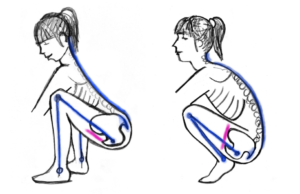Summoning awareness
Back in December I attended a beautiful movement workshop in Seattle with Mary Bond. Mary is a movement guru. She’s in her seventies, and even though she would tell you that she feels her age, you couldn’t tell.Just looking at her moving through space and rolling on the floor is inspiring.
She’s a rolfer, has been since the last 60’s! But she’s a movement Rolfer, she doesn’t touch her clients anymore and if she does, it is not to stretch fascia, it is to “summon awareness” to a place in the body. Then the mind stretches the fascia where it needs it.
Hard to believe?
Let me give you a concrete example. One of the practitioners in the group, a woman in her 40’s, had never been able to squat all the way down while keeping her feet flat on the ground. Never. Ever.
She has been dealing with some feet issues most of her life and was sure that her structure, in her lower legs and feet, simply could not accommodate such a move.
Then one day we worked on our pelvic floor (you know, those muscles at the bottom of your abdomen around your genital organs and your anus).
And when I say we worked, I mean we thought about it.
We contracted different muscles, different areas, we felt the weight of the bones in our pelvis, we didn’t physically touch anything. No fascial stretching there.
And Magic Mary cued: now think about your coccyx, your tailbone. It is the remnant of a tail, a segment that used to be able to move and is now fused. Think about the tension around it. You sit on it a lot, but how often do you pay attention to it, except when you fall and break it.
So pay attention to your tailbone, and feel that space between your tailbone and your anus (again, not a space we spend a lot of time thinking about!). And try to relax that space, imagine that your tailbone can float back, away from your anus, away from your body. Just a little bit, it doesn’t need to be much. And feel how different your pelvis floor is now, how different your pelvis and your walking are now. (Go on you can try at home). Now try to squat as you keep that space open, slowly, make sure you don’t tuck your tail in”.
We played with it for a while in class and the above mentioned practitioner felt that she could go lower in her squat! She didn’t think that was possible.
Fast forward the next morning and the same woman was giddy when she reported that after playing with the idea of releasing her tailbone and feeling like she could go lower she kept on exploring:
Ok so what else can I release as I go lower? What about the space between my tailbone and my left sit bone? My right sit bone? The space between my anus and my pubic bone at the front…
and before she knew it, she was squatting, flat feet on the ground.
For the first time in 45 years she was able to do something she didn’t think was possible. She then proceeded to squat all over the back yard and the house to her husband’s utter amazement: what the H… are you doing?!
You might not think that squatting is such an important part of life here in Portland or that it should be in your movement repertoire, yet mounting evidence shows that it is, and should be.
It’s important for pelvic floor health which is important to avoid organ prolapse, incontinence and all sorts of pelvic pains.
More on the pelvic floor later. But know that it’s not only for post-partum women.
My point here is that sometimes, or I should say often, our mind limits what we can and cannot do. We believe our body is meant to move THIS way and not that way, and we can’t possibly move THAT way because our structure doesn’t allow it. Well, think harder, or feel harder. Or softer. Start really feeling, noticing where your body could maybe, just maybe, be little less tight, or a little tighter, we’re all different.
Rolfing is a great way to explore your body and the possibilities you haven’t thought about. I would be happy and honored to help you on that path to discovery. So if you think your old habits and patterns are not working for you anymore (pain, fatigue anyone?) give me call to start exploring new options.







